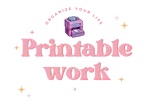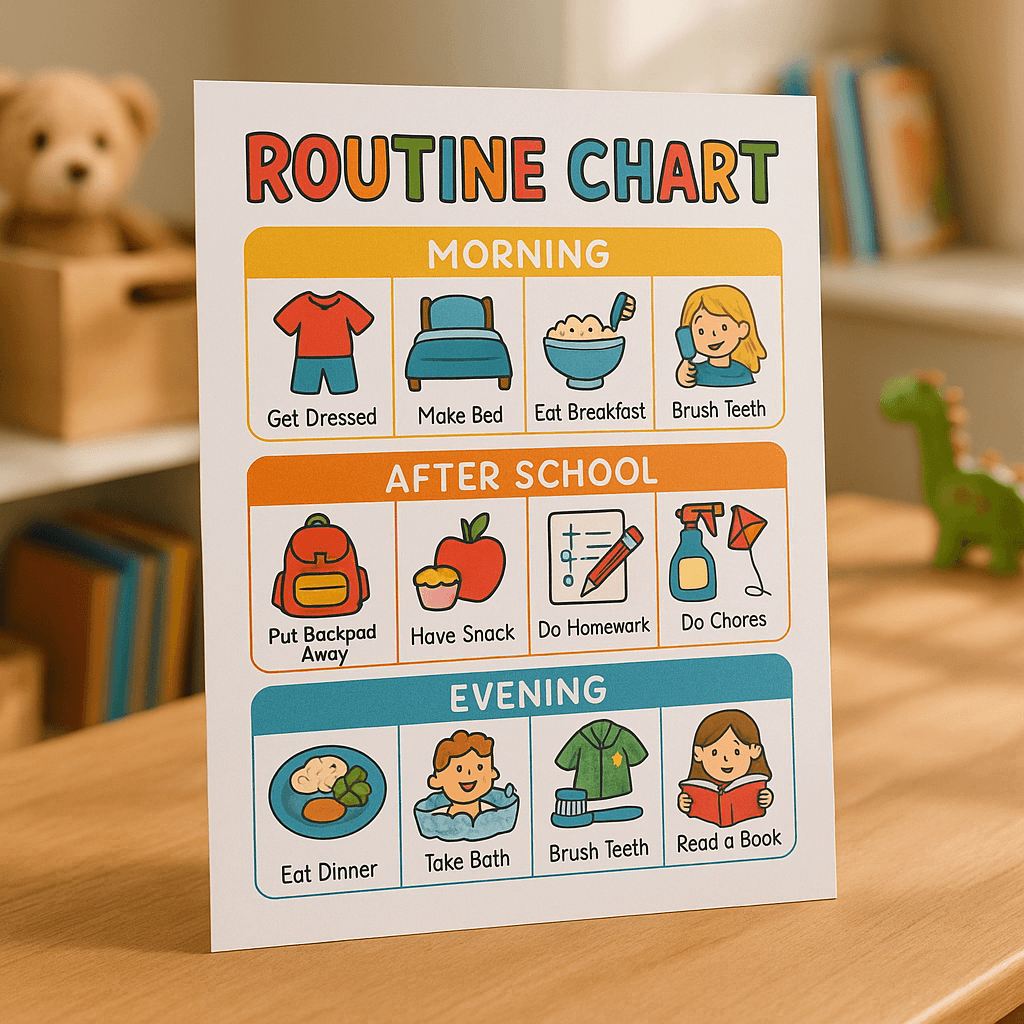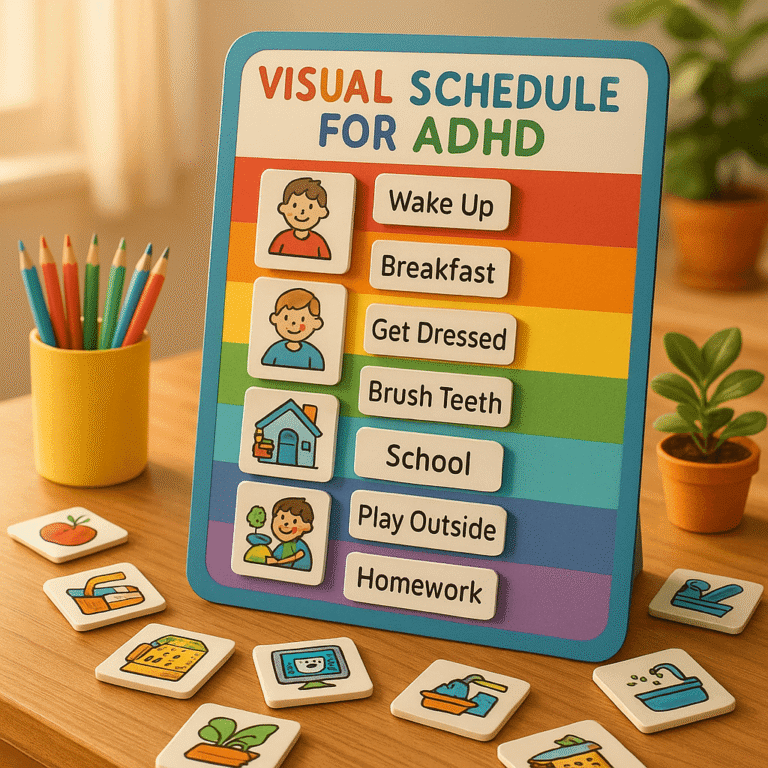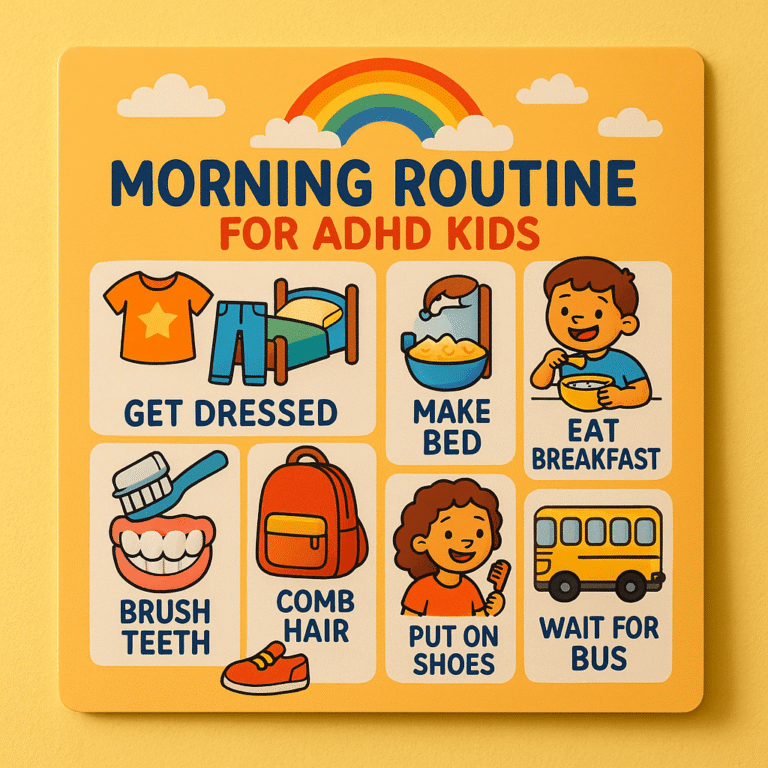Fostering independence in children is one of the most empowering gifts a parent or caregiver can offer. While every child develops at their own pace, building self-reliance early can have long-term benefits in confidence, organization, and time management. One simple yet highly effective tool to support this journey is the printable routine chart. These visual aids can turn chaos into clarity, especially for young learners still grasping the concept of time and sequential tasks.
In this post, we?ll explore how printable routine charts help children become more independent, the science behind visual routines, practical implementation strategies, and printable chart ideas to get started.
Why Independence Matters in Childhood Development
Encouraging independence allows children to:
- Build confidence in their abilities.
- Develop a sense of responsibility.
- Reduce dependency on adult prompts.
- Strengthen executive functioning skills such as planning and decision-making.
- Improve daily transitions and reduce stress during routines.
Children who experience autonomy early are more likely to adapt better to school expectations, handle challenges independently, and grow into self-sufficient adults.
The Power of Visual Schedules
Young children, particularly those under 10, thrive on structure and predictability. Printable routine charts provide a visual sequence of daily tasks in a format kids can follow on their own. For children with ADHD, autism, or anxiety, these visuals reduce cognitive overload and make transitions smoother.
Instead of verbal reminders like ?Go brush your teeth!? or ?Did you pack your bag??, a visual schedule gives them control over the process. It becomes a self-checklist for their day.
Printable Routine Charts vs. Verbal Instructions
Here?s why printable charts outperform verbal instructions for kids:
- ? Consistency: Visuals never forget or change their message. Children know exactly what?s expected every time they check the chart.
- ? Cognitive Reinforcement: Seeing an action reinforces memory. For visual learners, this is more effective than hearing commands.
- ? Autonomy: Kids don?t have to rely on being told what to do. They can take charge.
- ? Time Awareness: Charts with clocks or morning/evening divisions help kids associate activities with specific parts of the day.
How Printable Routine Charts Encourage Independence
Let?s break down how using printable routine charts fosters independence in real-world scenarios:
1. Morning Routines Without Nagging
With a morning routine chart posted near the child?s bedroom or bathroom, they can wake up, check off brushing teeth, dressing, and eating breakfast?without parental direction.
2. Homework and After-School Organization
A printable routine chart can include blocks like ?Snack?, ?Homework?, ?Creative Time?, and ?Chores.? This structure gives a clear, achievable sequence that builds time-management skills.
3. Bedtime Wind-Downs
Many children struggle with transitions at the end of the day. A printable bedtime chart helps them move from screen time to reading, brushing teeth, and sleep preparation more calmly.
4. Responsibility Charts
By integrating weekly responsibilities?like feeding the pet or setting the table?into their routine chart, kids learn accountability and contribution.
How to Create Effective Printable Routine Charts
Here?s how to make sure your printable routine chart is not only beautiful but also functional and motivating:
? Step 1: Keep It Age Appropriate
For toddlers and preschoolers, use simple icons and pictures. Older kids can handle text-based checklists.
? Step 2: Segment by Time of Day
Break the chart into morning, afternoon, and evening. It?s easier to follow and prevents overwhelm.
? Step 3: Involve Your Child
Let your child help design the chart or pick the icons. This boosts ownership and engagement.
? Step 4: Use Checkboxes or Velcro Tasks
Kids love the satisfaction of marking something as complete. This also adds a tangible sense of progress.
? Step 5: Keep It Visible
Place the chart in a highly visible location?like the bedroom wall, fridge, or bathroom mirror.
Examples of Printable Routine Charts
Here are popular types of printable routine charts you can start using right away:
- Morning Routine Chart
- After School Checklist
- Bedtime Routine
- Weekly Responsibility Tracker
- Visual Chore Chart
- Screen Time Schedule
- Toilet Training Routine
Many of these are available for download at printablework.com, offering both blank and filled-in templates.
Customizing Charts for Kids with ADHD
For kids with ADHD, customization is key:
- Keep the number of tasks small per segment.
- Use bright visuals with color coding.
- Consider checklists with timers or incentives.
- Avoid clutter?use white space for clarity.
Incorporating these adjustments can make your printable routine chart even more effective for neurodiverse learners.
Printable Tools = Long-Term Independence
As children master their routines with the help of visual charts, they gain confidence. They begin to remember steps, plan ahead, and even initiate their own routines without prompts. This fosters a lifelong habit of personal responsibility and productivity.
Over time, you can even reduce their reliance on the chart as their executive functioning skills strengthen.
Final Thoughts
If your goal is to raise self-sufficient, organized children, printable routine charts are a small change that deliver big results. They?re budget-friendly, easy to use, and incredibly powerful for both neurotypical and neurodivergent kids.
Whether you’re guiding a kindergartener through their morning or helping a 10-year-old manage after-school tasks, this visual system works.
Start simple, be consistent, and celebrate every small win.
Parents and experts agree: small steps matter. Here are 10 effective ways to nurture independence in children?like breaking tasks into steps and offering choices?perfectly aligned with printable routine charts. Learn more in this guide:
? 10 Ways to Encourage Independence in Your Child at Home ? Children?s House Montessori







